
Catasetum, abbreviated as Ctsm. in horticultural trade, is a genus of showy epiphytic Orchids, family Orchidaceae, subfamily Epidendroideae, tribe Cymbidieae, subtribe Catasetinae, with 166 species, many of which are highly prized in horticulture.

Catasetum maculatum, the spotted catasetum, is a species of orchid found from Central America to Venezuela. The flowers are dimorphic, and the male and female flowers look so different that they were originally thought to be two separate species. A few days after opening, the male flowers emit a strong odor, which serves to attract bees.

Acer floridanum, commonly known as the Florida maple and occasionally as the southern sugar maple or hammock maple, is a tree that occurs in mesic and usually calcareous woodlands of the Atlantic and Gulf coastal plain in the United States, from southeastern Virginia in the north, south to central Florida, and west to Oklahoma and Texas and also common in south Illinois and Missouri

Catasetinae is a subtribe within the Orchidaceae and contains 8 genera. Its members are widespread in lowland tropical Central and South America up to 1,500 meters. They are found on trees, stumps or old fence posts.
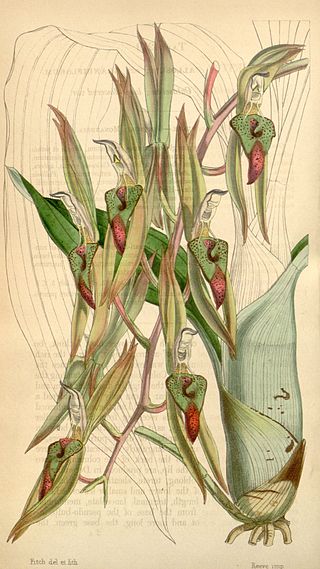
Catasetum callosum, the callused catasetum, is a species of orchid.
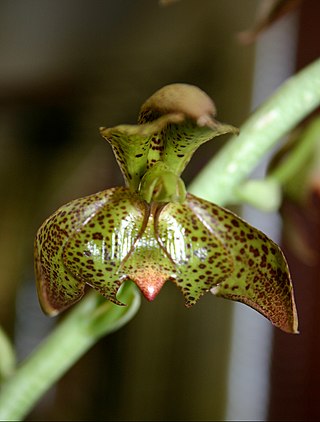
Catasetum cernuum, the nodding catasetum, is a species of orchid found from Trinidad to Brazil.

Catasetum deltoideum, the triangular catasetum, is a species of orchid found from Guyana, French Guiana, Suriname and Brazil.
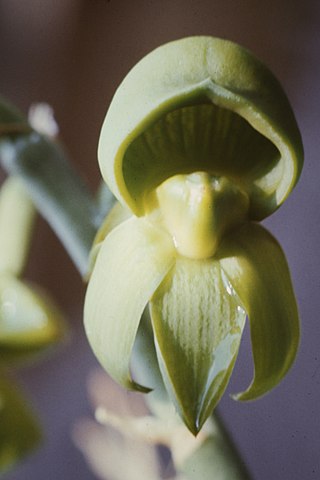
Catasetum discolor, the differently colored catasetum, is a species of orchid.

Catasetum expansum, the expansive catasetum, is a species of epiphytic orchid endemic to Ecuador.

Catasetum fimbriatum, the fringed catasetum, is a member of the orchid family of flowering plants and lives in a warm tropical environment. This plant uses a fascinating strategy to spread its pollen to other flowers via insects, primarily bees. When a pollinator lands on male flowers of C. fimbriatum and stimulates them, pollen is planted onto the back of the pollinator. This assures their gametes will be spread to other flowers the bee visits of the same species.

Catasetum luridum, the pale-yellow catasetum, is a species of orchid. It is native to South America, where it is distributed from Guyana to Brazil.

Catasetum macrocarpum, the large-fruited catasetum, is a species of orchid. It is also known as the monkey goblet and monk's head orchid. It is native to the Caribbean and South America, where its distribution extends from Trinidad and Tobago to Argentina.
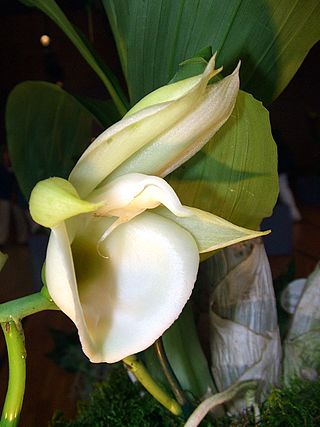
Catasetum pileatum, the felt-capped catasetum or mother of pearl flower, is a species of orchid found from Trinidad to Ecuador.

Catasetum saccatum, the sack-shaped catasetum, is a species of orchid.
C. spinosum may refer to:
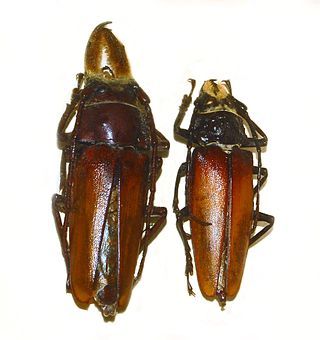
Callipogon barbatum is a species of flat-faced longhorn beetle in the subfamily Prioninae of the family Cerambycidae.
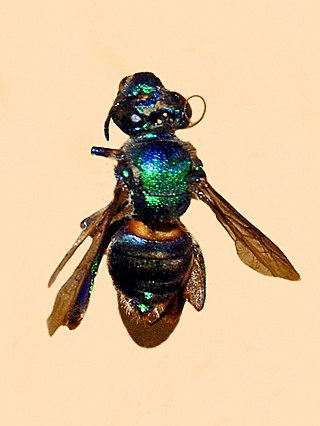
Euglossa cordata is a primitively eusocial orchid bee of the American tropics. The species is known for its green body color and ability to fly distances of over 50 km. Males mostly disperse and leave their home nests, while females have been observed to possess philopatric behavior. Because of this, sightings are rare and little is known about the species. However, it has been observed that adults who pollinate certain species of orchids will become intoxicated during the pollination.
Hypericum barbatum is a species of flowering plant in the family Hypericaceae. It is native to southeastern Europe, especially in Greece. The sepals bear many long silky hairs hence the specific name barbatum meaning "bearded".

Stromatium barbatum is a species of beetle in the family Cerambycidae. This species is native to the Oriental region. It has been recorded in mainland India, the Andaman Islands, Myanmar, Sri Lanka, Mauritius, Réunion and Seychelles. This species has also spread to continental Africa and Madagascar.
















